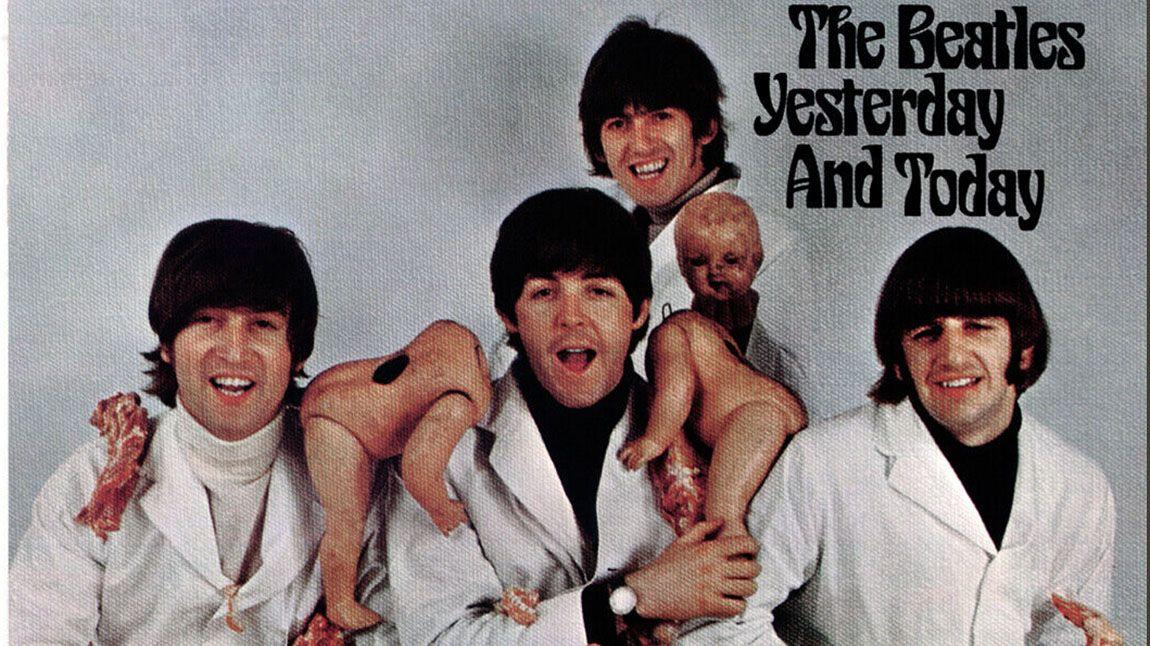As with many of the most enduring Beatles stories, the saga of the infamous “Butcher Album” begins with disagreement and reluctant compromise.
But this difference in artistic vision strayed further outside the norm than nearly any other Beatles dispute: It involved an unbelievably scandalous and straight-up bizarre idea to photograph the Fab Four in butcher coats holding human remains as the cover art for their 1966 album “Yesterday And Today.”
Unlike many of the complex interpersonal dynamics dogging the band for the latter half of the '60s, it hardly requires any deep psychoanalysis to realize why an album cover like this would sow discord.
As is customary, opinions within the group ran the gambit.
John Lennon had no issue with the blood and gore. In fact, he was thinking even darker.
“My original idea for the cover was better — decapitate Paul,” Lennon said.
George Harrison, ever the contrarian, felt differently.
“I thought it was gross. Sometimes we all did stupid things, thinking it was cool or hip when it was naive or dumb, and that was one of them. … So we put on those butchers’ uniforms for that picture. … I’m disgusted.” Harrison wrote in the Beatles Anthology. “What the bloody hell is that all about?”
The shoot came from the mind of a young photographer named Robert Whitaker. A favorite choice for the band, Whitaker had previously taken the beloved John Lennon “Dandelion” portrait — earning him the artistic license to convince the band to get real weird with their shoots.

When the group met at Whitaker’s London studio in March 1966, the photographer was ready to stir the pot.
“I got fed up with taking squeaky-clean pictures of the Beatles, and I thought I’d revolutionize what pop idols are,” Whitaker told the Rolling Stone’s Jon Savage.
It’s a miracle Whitaker’s cover ever got to production in the first place. But it didn’t take long for Capitol Records to put a stop to it.
As soon as the cover hit Capitol Records President Alan Livingston’s desk, it seemed like a no-go: “What in the hell is this? How can I put this out?”
Apparently, Paul McCartney put up somewhat of a fight, arguing it was the band’s way of protesting the war in Vietnam. Between him and John, who was adamant the album cover be used, Livingston was pressured into green-lighting production of 750K albums.
“If the public can accept something as cruel as the war, they can accept this cover,” Lennon said.
After sending out 60,000 albums to distributors and retailers ahead of the release, Livingston soon received word that “dealers would not touch it. They would not put the album in their stores.”
A replacement photo from the same shoot was substituted in its place, derided by Lennon, who described it as an “awful-looking picture of us looking just as deadbeat but supposed to be a happy-go-lucky foursome.”

It’s rumored around 50,000 original “butcher” sleeves were dumped in a landfill before the decision was made to simply paste a new cover on top of the old.
A rare “Trunk” cover, featuring the replacement cover pasted over the original, sold for $3,375 at Heritage in May 2022.
Despite the album ultimately reaching the top of the charts, this supply chain screw-up cost Capitol Records $200,000 — earning the distinction of the only Beatles album to lose money for the company.
The combination of the shocking artwork, anti-establishment symbolism and extreme scarcity, drove the “Butcher Album” to become “the definitive Beatles collectible” according to George Harrison.
“They made it into a really heavy collector’s item,” Ringo Starr was quoted in the Beatles Anthology, “which I’m afraid to say, I don’t have a copy of, because in those days, we never thought, ‘We’d better save this.’”
In 1978, Lennon wrote this note discussing the value of the album:

“What you say? This is the famous 'butcher' cover. It's too horrible ... to even be seen! (So don’t look) but can sell it for 11 million dollars. My original idea for the cover was better – decapitate Paul – but he wouldn’t go along with it.”
Lennon’s personally owned and signed copy sold for more than $233,000 in 2019, with similar first state copies continuing to fetch similar premiums at auction.
Will Stern is a reporter and editor for cllct. You can follow him on X at @Will__Stern.

